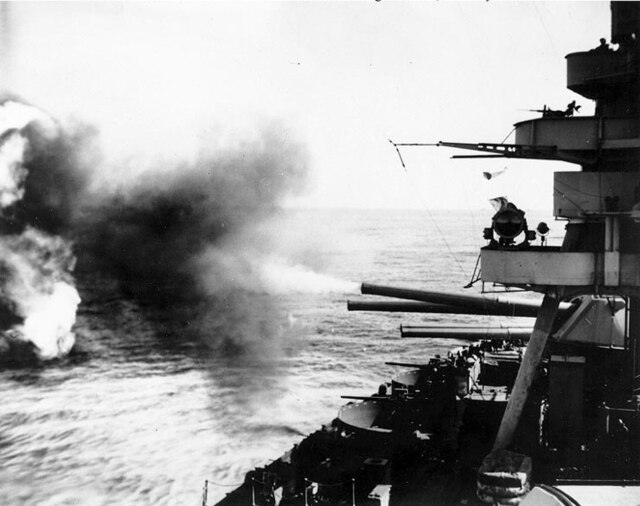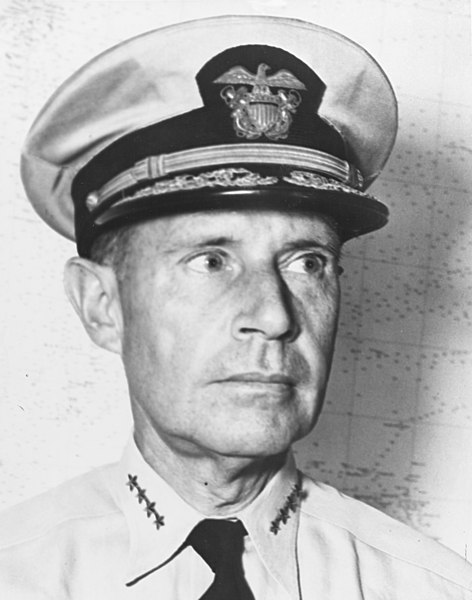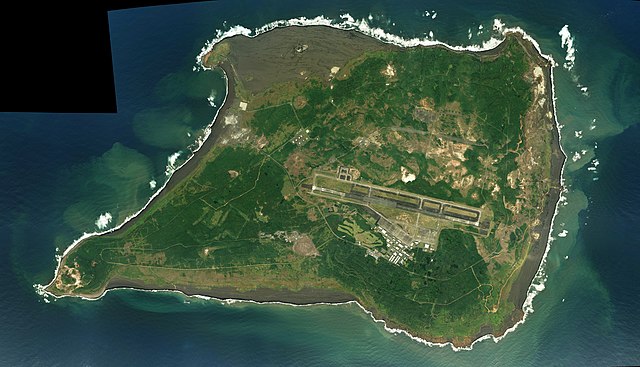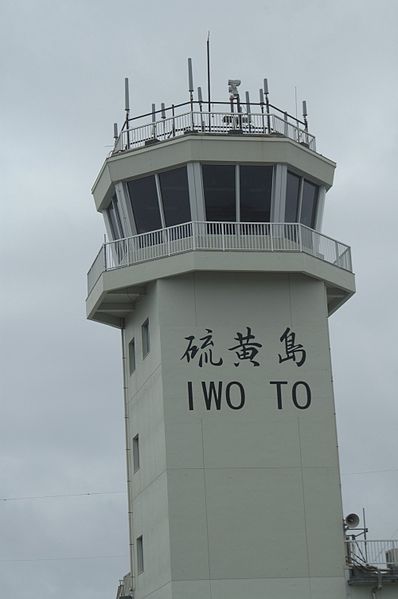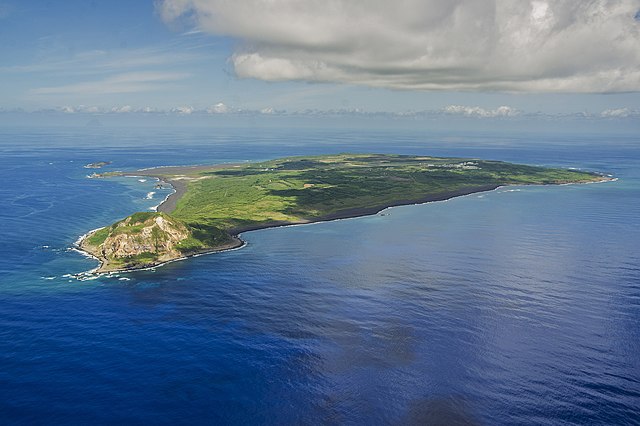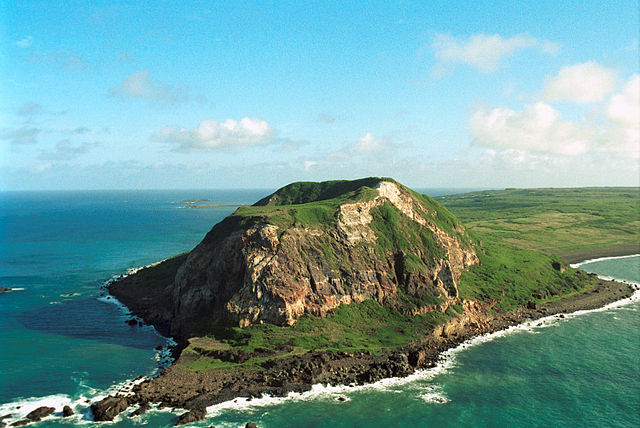The Battle of Iwo Jima was a major battle in which the United States Marine Corps (USMC) and United States Navy (USN) landed on and eventually captured the island of Iwo Jima from the Imperial Japanese Army (IJA) during World War II. The American invasion, designated Operation Detachment, had the purpose of capturing the island with its two airfields: South Field and Central Field.
A U.S. 37 mm (1.5 in) M3 anti-tank gun fires against Japanese cave positions in the north face of Mount Suribachi.
Lieutenant General Tadamichi Kuribayashi
The battleship USS New York firing her 14 in (360 mm) main guns on the island, 16 February 1945 (D minus 3)
Admiral Raymond A. Spruance
Iwo Jima, now officially romanized Iōtō, is one of the Japanese Volcano Islands, which lie south of the Bonin Islands and together with them make up the Ogasawara Archipelago. Together with the Izu Islands, they make up Japan's Nanpō Islands. Although 1,200 km (750 mi) south of Tokyo on Honshu, Iwo Jima is administered as part of the Ogasawara Subprefecture of the Tokyo Metropolitan Government.
Photo of Iwo Jima (Iōtō), c. 2016, with Mount Suribachi in the lower left hand corner
The island's SDF airport control tower (2010)
Aerial view of Iwo Jima in 2014
Mount Suribachi on Iwo Jima



